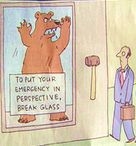HI folks.. I just have a quick question. I want to try to hit a <1 AHI night. Iam curious about my a-flex setting. It is set on "2" right now. I was wondering if I change this. thus relieving less pressure would help me have less OSA?
I have been busting off some nice nights. Over the last 8 days I am avg. 2.2 AHI. My low a 1.9 and my high a 2.6. I was just wondering how important this setting is. I am finally settling in with my mask and my new bella loops that I totally love!!
I dont have any major issues with leaks. I had about 5 mins of large leak the other night.. outside of that its been 0!
Just looking to learn a bit.
As far as my doctor. I had my first visit with him today since getting on the hose. I decided I would print off a composite of my last 8 days of therapy, and include the daily charts too... he was like WOW. Usually the DME just sends us the last page, which just shows the averages overall and such. He was very intrigued and he thought it was great that I could look at my own data and waveforms. He had no issue withit. He said.. any troubles, call. Feels good to well.... feel good!!! All I need my DME for now is to order supplies. Works for me!
a-flex question. and my doc apt. today.
Re: a-flex question. and my doc apt. today.
AFlex setting may or may not make a difference in your AHI. A setting of 2 doesn't necessarily mean that you have twice the exhale relief or drop in pressure than a setting of 1 would give you. The reduction that is given is based on flow rate and isn't like ResMed's EPR reduction.
Here is what happened when I turned my AFlex off one night. I had always used a setting of 2.
I only did it one night....bad experiment. You can read about it here.
viewtopic.php?f=1&t=67883&p=631376&hili ... mb#p631376
Some people have reported less AHI with a reduction in the Flex setting or even turning it off.
Only way to know is to try it if you are wanting to know if it will give you your desired results.
Also remember when you are evaluating your AHI....make sure you are evaluating obstructive apneas and hyponeas when wondering about pressure needs. If your AHI is 50% clear airway then you may already have a really nice low obstructive hourly average.
Here is what happened when I turned my AFlex off one night. I had always used a setting of 2.
I only did it one night....bad experiment. You can read about it here.
viewtopic.php?f=1&t=67883&p=631376&hili ... mb#p631376
Some people have reported less AHI with a reduction in the Flex setting or even turning it off.
Only way to know is to try it if you are wanting to know if it will give you your desired results.
Also remember when you are evaluating your AHI....make sure you are evaluating obstructive apneas and hyponeas when wondering about pressure needs. If your AHI is 50% clear airway then you may already have a really nice low obstructive hourly average.
_________________
| Machine: AirCurve™ 10 VAuto BiLevel Machine with HumidAir™ Heated Humidifier |
| Additional Comments: Mask Bleep Eclipse https://bleepsleep.com/the-eclipse/ |
I may have to RISE but I refuse to SHINE.
- Sir NoddinOff
- Posts: 4190
- Joined: Mon May 14, 2012 5:30 pm
- Location: California
Re: a-flex question. and my doc apt. today.
That's damn good AHI, so I'd say just go for comfort... in that respect read the following: On this forum, there are two schools of getting into your prescribed therapy pressures levels. The first is to just get down to business and turn off the gradual pressure increase feature, thusly letting you sort out your leak and mask issues right off the bat. The other school likes to ease into the higher pressures ranging from 5 to 20 minutes, mostly in the hopes that it'll let you ease into sleep before your prescribed pressure ramps up all the way (this time delay method is variously called EPR, A-Flex etc). Neither way is right or wrong... just different approaches to getting to sleep faster. That's why people call it a comfort feature.
The factors in making this decision include: what are your upper target pressures, how good is your mask fit, how well do you adapt to air being pumped into your throat, how light a sleeper are you, how long does it typically take you to get to sleep, and finally, how long have you been using CPAP. Don't laugh at the last one. Most long term CPAP users have had lots of time to adapt to the foreign feeling of having air injected into their airways. It's nothing shocking or new to them, therefore they usually choose just to sort out their CPAP leaks and mask fit early on so they can get down to the business of sleeping. If pressure relief helps you go ahead and use it. If it stops being useful dump it.
The factors in making this decision include: what are your upper target pressures, how good is your mask fit, how well do you adapt to air being pumped into your throat, how light a sleeper are you, how long does it typically take you to get to sleep, and finally, how long have you been using CPAP. Don't laugh at the last one. Most long term CPAP users have had lots of time to adapt to the foreign feeling of having air injected into their airways. It's nothing shocking or new to them, therefore they usually choose just to sort out their CPAP leaks and mask fit early on so they can get down to the business of sleeping. If pressure relief helps you go ahead and use it. If it stops being useful dump it.
_________________
| Mask: AirFit™ F10 Full Face Mask with Headgear |
| Additional Comments: Sleepyhead software v.0.9.8.1 Open GL and Encore Pro v2.2. |
I like my ResMed AirFit F10 FFM - reasonably low leaks for my ASV therapy. I'm currently using a PR S1 AutoSV 960P Advanced. I also keep a ResMed S9 Adapt as backup. I use a heated Hibernite hose. Still rockin' with Win 7 by using GWX to stop Win 10.
Re: a-flex question. and my doc apt. today.
Flex is one of the things you just have to try and see what happens for you. More flex helps some, hurts others.
_________________
| Mask: Swift™ FX Nasal Pillow CPAP Mask with Headgear |
| Humidifier: S9™ Series H5i™ Heated Humidifier with Climate Control |
| Additional Comments: Also SleepyHead, PRS1 Auto, Respironics Auto M series, Legacy Auto, and Legacy Plus |
Please enter your equipment in your profile so we can help you.
Click here for information on the most common alternative to CPAP.
If it's midnight and a DME tells you it's dark outside, go and check for yourself.
Useful Links.
Click here for information on the most common alternative to CPAP.
If it's midnight and a DME tells you it's dark outside, go and check for yourself.
Useful Links.












